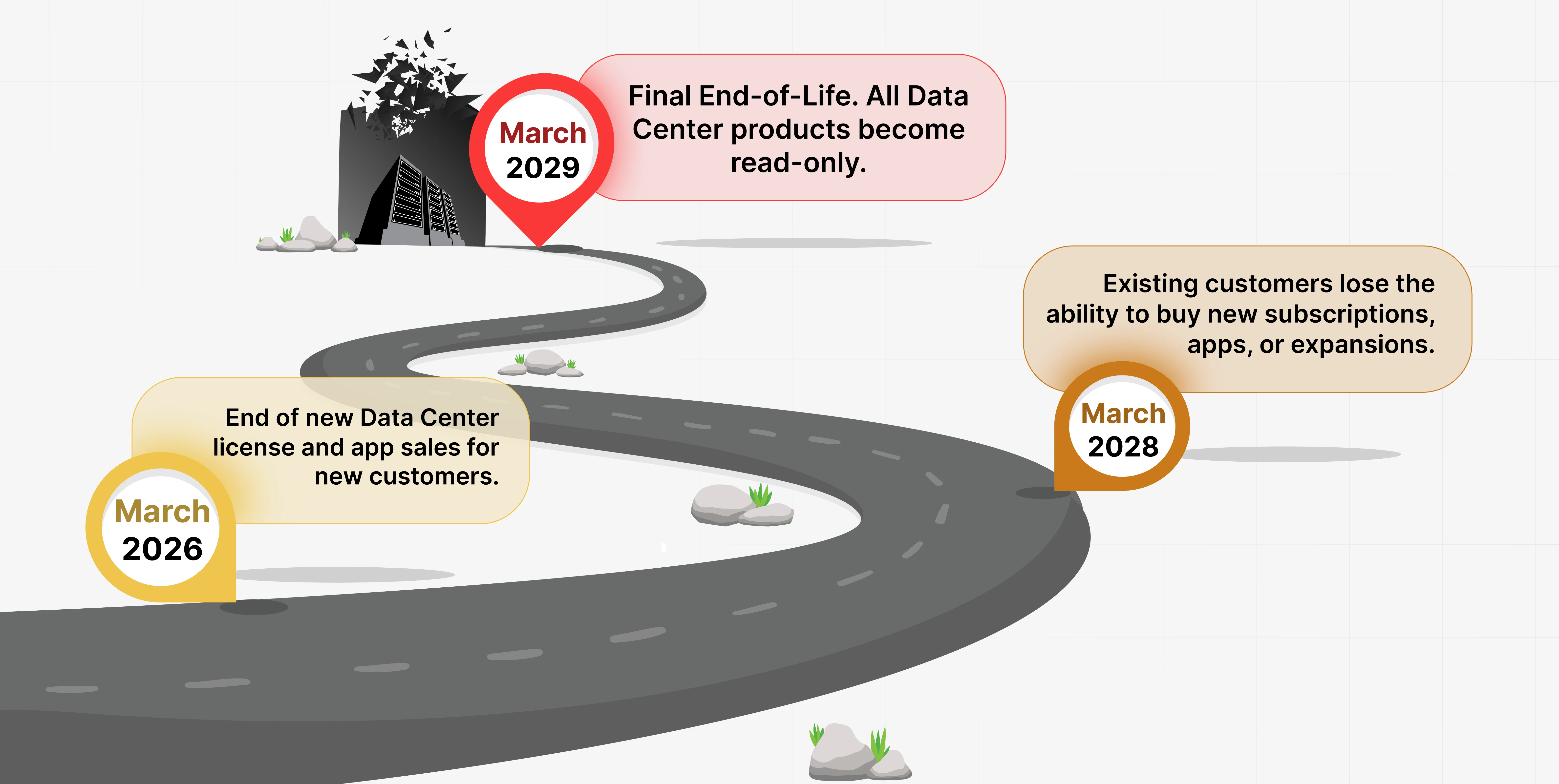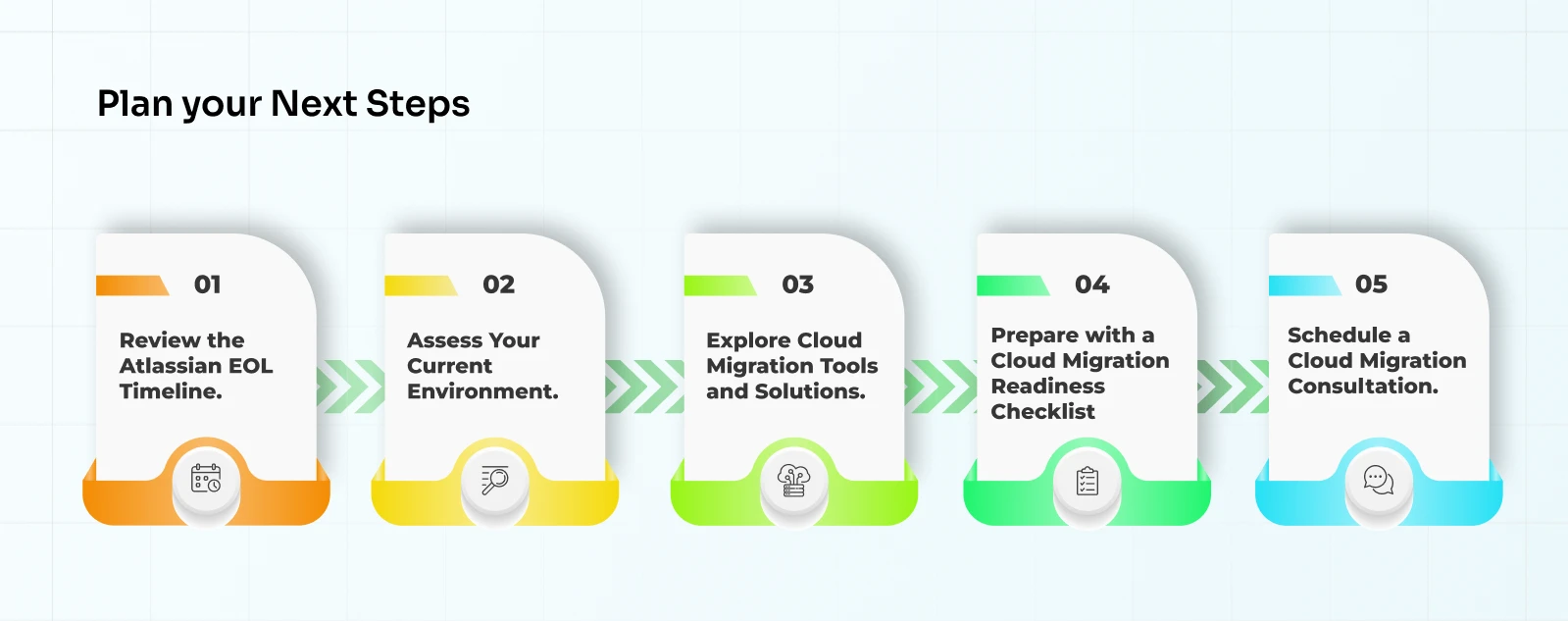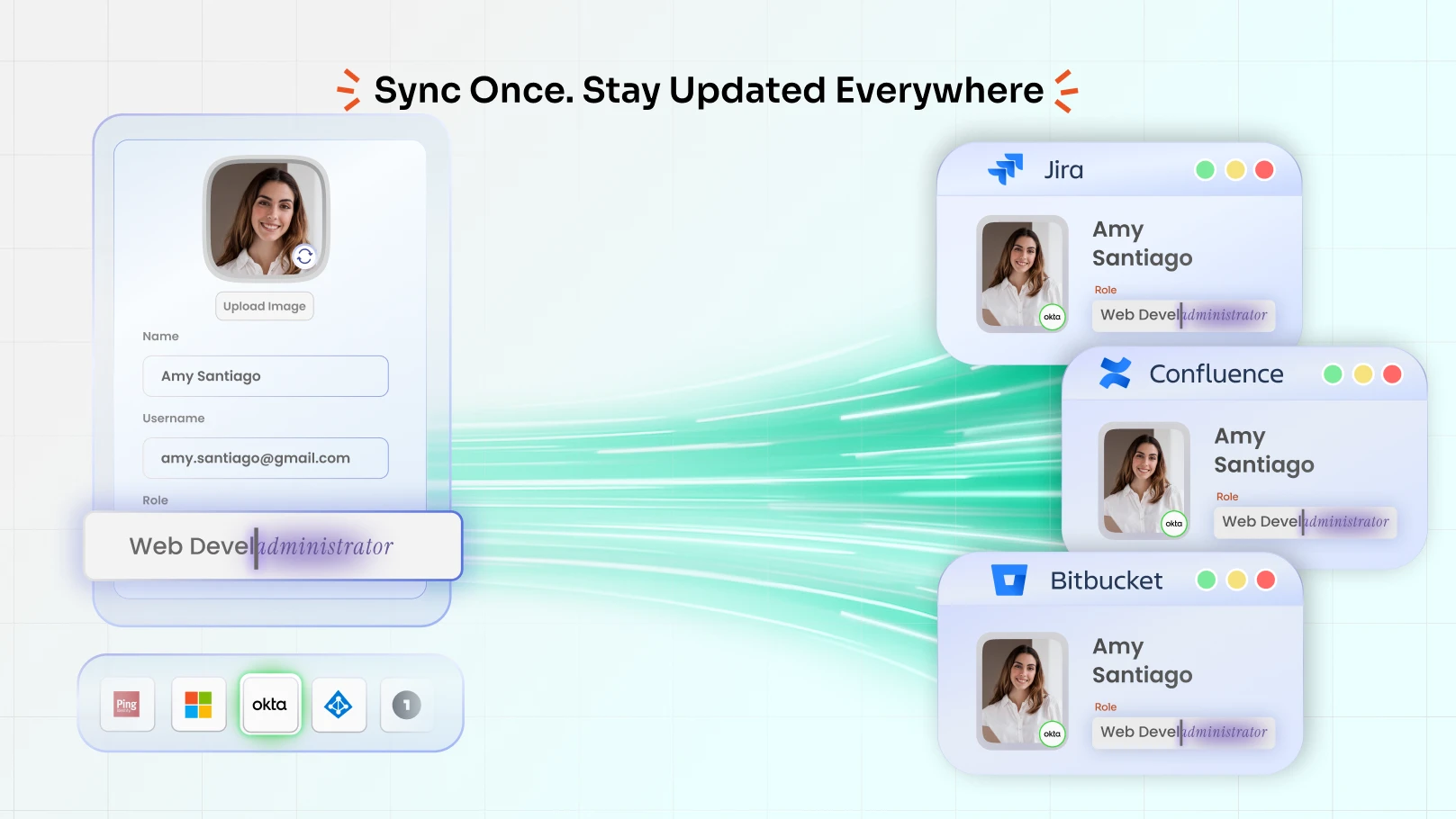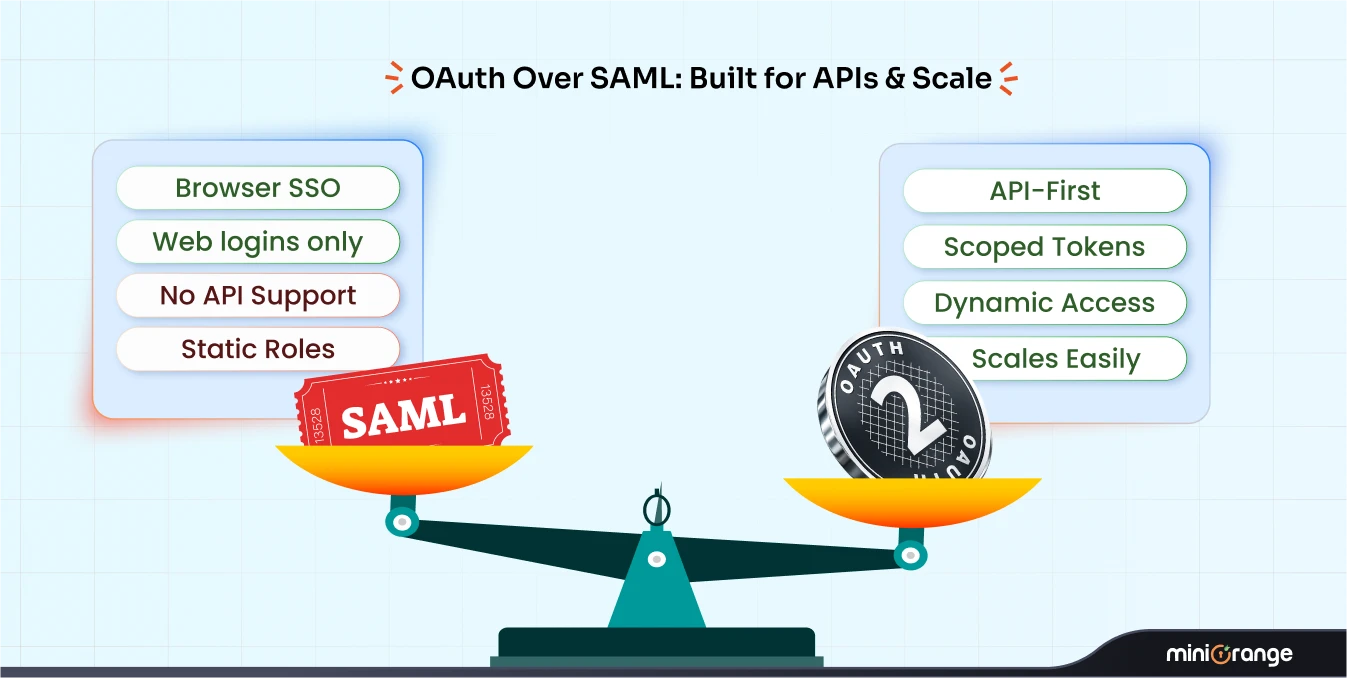Atlassian Data Center is Reaching End of Life: Here's What That Means for You
When Atlassian announced that its Data Center (DC) products will reach end-of-life (EOL), it sent a ripple through IT departments worldwide. As an Atlassian Marketplace leading Vendor, we understand this is a significant change, for many enterprises. Atlassian DC has been the backbone of collaboration, issue tracking, and software delivery.
Atlassian’s decision is strategic: it’s shifting focus entirely to its Cloud platform, where innovation moves faster, scalability is built in, and security is managed at the platform level, and with AI at its core, it promises to accelerate efficiency and Teamwork collaboration.
Atlassian's decision creates an urgent question for enterprises: What does Atlassian's migration to cloud mean for your organization?
This insightful blog walks you through everything you need to know about Atlassian timelines, migration paths, and how miniOrange can help your team migrate securely, seamlessly, and on schedule.
The Atlassian Data Center EOL Timeline: Don’t Miss These Key Dates
Here's your Atlassian migration timeline. These dates define your Jira migration steps, Confluence Cloud migration plan, and Atlassian licenses strategy. Understanding these milestones helps you plan your cloud migration steps effectively.

| Date | Milestone | Impact |
|---|---|---|
| March 30, 2026 | End of new Data Center license and app sales for new customers. | New organizations can no longer start in DC. Cloud becomes the default for New customers. |
| March 30, 2028 | Existing customers lose the ability to buy new subscriptions, apps, or expansions. | You’ll be able to renew existing licenses but not expand your deployment. |
| March 28, 2029 | Final End-of-Life. All Data Center products become read-only. | No updates, security fixes, or support from Atlassian. |
Until March 2029, Atlassian will continue to release critical security patches and technical support, but product innovation will happen exclusively in Atlassian Cloud.
Tip: Revisit this timeline periodically. It’s your anchor for planning, budgeting, and stakeholder communication.
Why Atlassian Is Going All-In on Cloud
Atlassian’s move isn’t just about retiring old technology, it’s about delivering a unified experience. Here’s what’s driving this shift:
- Agility and innovation: Features like Atlassian Intelligence and Cloud Automation, are rolling out faster in Cloud than ever possible in DC.
- Global scalability: Cloud environments adjust resources on demand, no manual scaling or downtime planning.
- Lower total cost of ownership: No more hardware upkeep, patch cycles, or manual upgrades.
- Enhanced security and compliance: Atlassian Cloud is backed by ISO 27001, SOC2, and GDPR compliance out of the box.
- Leveraging the Use of AI: With AI at the core of Atlassian’s innovation teams can now use Rovo to fastrack its day to day activities and boost Teamwork collaboration.
This ensures less time managing infrastructure and more time delivering business value. For admins, it means better reliability, faster updates, and a simplified maintenance model.
Your Migration Options: How to Move from Data Center to Cloud
When the clock is ticking toward 2029, there are essentially two paths forward:
Option 1: Migrate to Atlassian Cloud
The recommended route, and the one Atlassian is heavily investing in.
Key Advantages:
- No servers, no downtime: Atlassian manages hosting, scaling, and uptime.
- Automatic updates: New features and fixes arrive continuously.
- Enhanced collaboration: Real-time editing in Confluence and advanced integrations across the Atlassian ecosystem.
- Unified admin experience: Centralized control over identity, access, and billing.
For enterprises with complex configurations, migration doesn’t have to be daunting. Tools like Atlassian Cloud Migration Assistant can handle large data transfers efficiently.
Option 2: Staying on Data Center (For Now)
Some organizations, especially in finance, defense, and government sectors, face unique constraints around data sovereignty and compliance.
If you’re in that category, you might need to maintain a DC environment temporarily while planning a phased migration or hybrid model.
miniOrange provides extended user management and OAuth SSO solutions even for DC instances nearing EOL, helping you maintain compliance without disruption.
Ready to Get Started? Your Next Steps
The Atlassian Data Center end-of-life clock is ticking toward March 2029. Organizations that wait too long risk service interruptions, unsupported environments, and compliance gaps. Starting your migration early ensures a smooth transition, minimizes downtime, and lets your teams take full advantage of Atlassian Cloud features from day one.
Here’s a practical roadmap to get started:

1. Review the Atlassian EOL Timeline
Familiarize yourself with the key dates for your products. Understanding the milestones, such as the end of new license sales in 2026, subscription limitations in 2028, and full EOL in 2029, will help you prioritize atlassian migration tasks, allocate resources, and communicate deadlines to stakeholders. This timeline is your anchor for planning a phased or full migration strategy.
2. Assess Your Current Environment
Take stock of your existing Jira, Confluence, and Bitbucket instances. Document active projects, spaces, workflows, apps, and integrations. Identify dependencies, legacy configurations, and unused content that can be archived before migration. This assessment forms the foundation of your migration plan, helping you avoid surprises during cutover and ensuring a cleaner, optimized Cloud environment.
3. Explore Cloud Migration Tools and Solutions
Invest in the right tools to simplify the migration process. miniOrange provides a suite of Cloud migration solutions designed to streamline identity management, automate provisioning, and secure sensitive data. Leveraging these tools reduces manual effort, minimizes errors, and ensures a smooth transition for both admins and end users.
4. Prepare with a Cloud Migration Readiness Checklist
A structured checklist helps you organize tasks, assign responsibilities, and track progress. Include items such as project and space audits, app compatibility verification, user provisioning setup, and security validation. Planning in advance ensures that nothing is overlooked and that the migration proceeds systematically and predictably.
5. Schedule a Cloud Migration Consultation
Engage experts early to guide you through strategy, execution, and post-migration support. A migration consultation can help identify risks, validate configurations, and provide actionable recommendations tailored to your Atlassian environment. Expert guidance ensures the migration is efficient, secure, and aligned with your organization’s operational goals.
Expert Advice & Feedback
If your organization still relies on Data Center or on-premises infrastructure, or if you have questions about Cloud readiness, connect with our experts.
We welcome your insights, whether it’s feedback, migration experiences, or suggestions for future documentation.
Final Thoughts
The Atlassian Data Center end of life marks a turning point in how enterprises collaborate and manage software projects. Cloud isn’t just the next step, it’s the foundation for what’s next in enterprise agility.
miniOrange provides you with cloud-ready security apps, along with the expertise to make the move secure, efficient, and future-ready. Because this isn’t just about moving platforms, it’s about evolving how your teams work.




Leave a Comment
1 Comment
Seceon.inc
Insightful breakdown